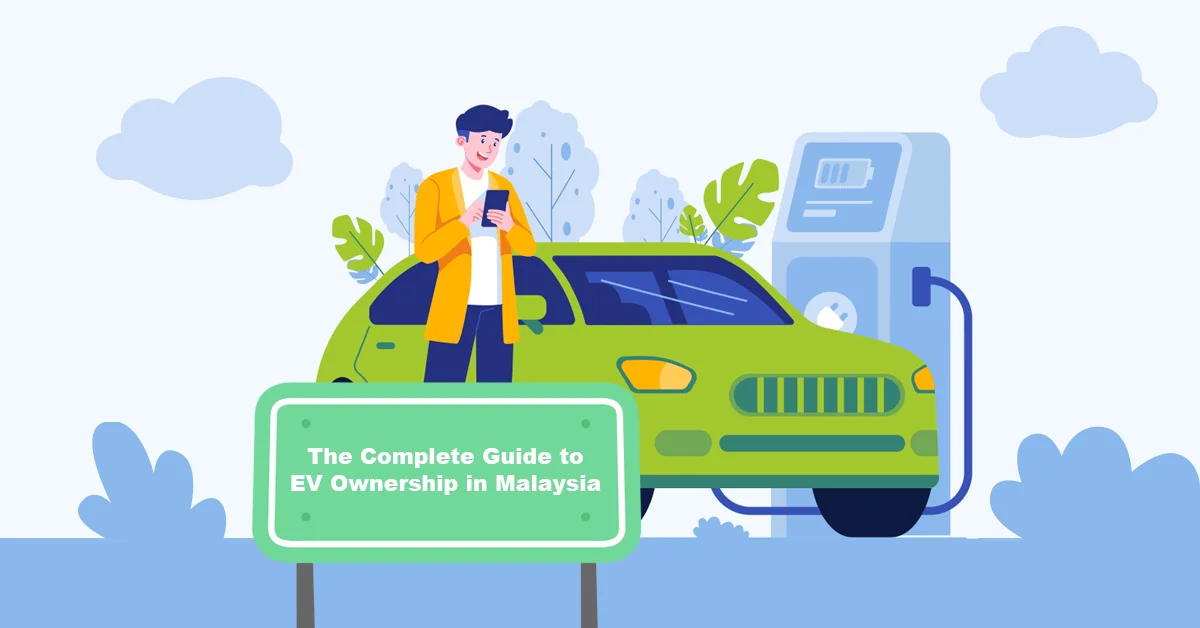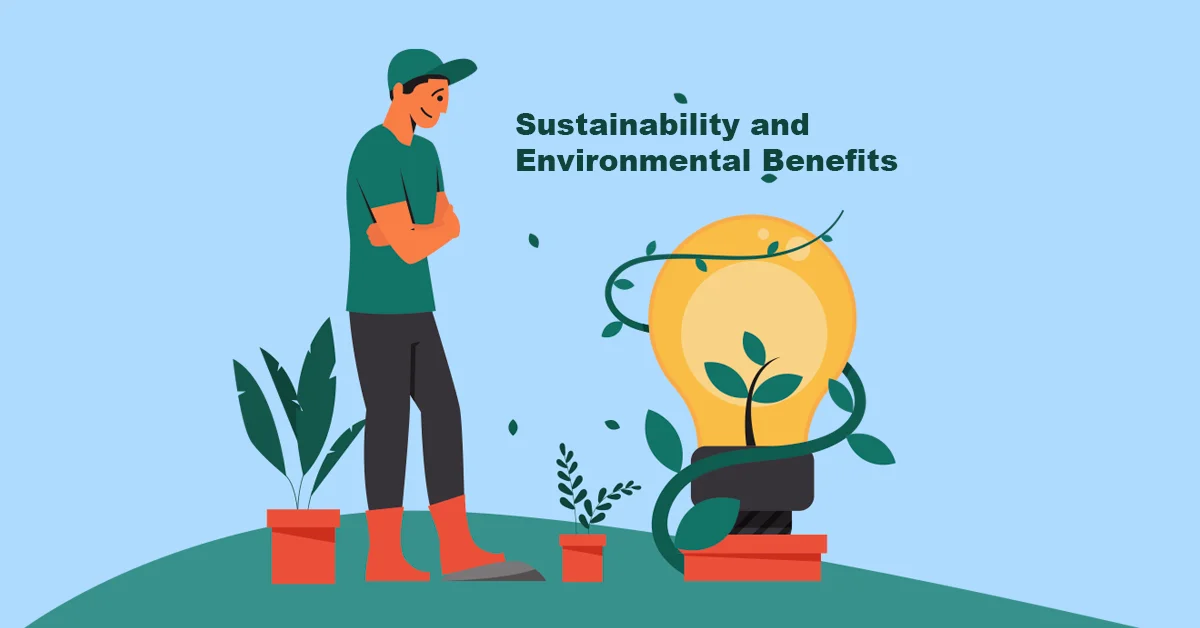
The advent of electric vehicles (EVs) is reshaping the automotive landscape worldwide, and Malaysia is no exception to this transformative trend. With the global push towards sustainability and reducing carbon emissions, EVs have emerged as a pivotal technology in the pursuit of a greener future. In Malaysia, the government and various stakeholders have been actively promoting the adoption of electric vehicles as part of the country’s commitment to environmental conservation and sustainability.
This shift towards electric mobility brings with it a host of considerations for potential owners, particularly regarding the financial aspects of EV ownership. Understanding the costs, savings, and subsidies associated with EVs is crucial for consumers to make informed decisions. This comprehensive guide aims to navigate through the intricacies of financing and owning an EV in Malaysia. It delves into the initial costs, operational expenses, and the savings potential of electric vehicles, alongside a detailed exploration of the subsidies and incentives provided by the Malaysian government.
By offering a deep dive into these aspects, this post seeks to equip readers with the knowledge needed to embark on the journey of EV ownership, contributing to a more sustainable and environmentally friendly mode of transportation.

Understanding the Costs of EV Ownership
Initial Purchase and Financing
The journey into EV ownership in Malaysia begins with understanding the initial purchase price, which often presents the most significant barrier to entry. Electric vehicles, due to their advanced technology and the cost of batteries, typically come with a higher sticker price compared to traditional internal combustion engine vehicles. However, the Malaysian government, recognizing the need to promote sustainable transportation, offers various incentives and rebates designed to lower these upfront costs. These financial incentives include reductions in import duties, excise taxes, and sales taxes for EVs, which can substantially decrease the purchase price.
Financing options for electric vehicles in Malaysia have also evolved to accommodate the growing market. Many financial institutions now offer special loan rates and terms for EV purchases, acknowledging the vehicles’ lower operational and maintenance costs. Potential buyers should carefully consider these financing options, comparing interest rates, loan terms, and any associated fees to find the most cost-effective solution. Additionally, some dealerships and manufacturers offer leasing programs, providing an alternative to traditional purchasing that might include maintenance packages or easier upgrade paths as newer models are released.
Operating Expenses
Operating an electric vehicle in Malaysia introduces owners to a different set of expenses compared to running a petrol or diesel car. One of the most notable differences is the cost of “refuelling.” Electricity rates for charging an EV are significantly lower than the cost of petrol, leading to substantial savings over time. The efficiency of electric motors further enhances these savings, as EVs convert a higher percentage of the electrical energy from the grid to power at the wheels.
Maintenance costs for electric vehicles are another area where owners can expect savings. EVs have fewer moving parts than traditional vehicles, reducing the likelihood of mechanical failures and eliminating the need for oil changes, fuel filter replacements, and many other routine maintenance tasks associated with combustion engines. However, it’s important to note that while general maintenance costs are lower, potential expenses may arise from the replacement of EV-specific components, such as the battery pack. Battery longevity has improved significantly in recent years, but replacement costs can be high, although they are expected to decrease as technology advances.
Insurance premiums for EVs can vary compared to traditional vehicles. Initially, some insurers charged higher premiums for electric vehicles, citing the higher cost of repair and replacement parts. However, as EVs become more common and the cost of their components decreases, insurance costs are beginning to normalise. Owners may also find insurance companies that offer discounts for electric vehicles as part of their commitment to environmental sustainability.
Understanding these costs is crucial for prospective EV owners in Malaysia, providing a clearer picture of the financial commitments and long-term savings associated with electric vehicle ownership.

Savings Realised from EV Ownership
Fuel and Maintenance Savings
One of the most immediate benefits of EV ownership in Malaysia is the significant reduction in fuel costs. Electric vehicles, powered by electricity, sidestep the need for gasoline or diesel, which can be subject to volatile price fluctuations. Charging an EV is considerably cheaper than fueling a conventional vehicle, especially when leveraging off-peak electricity tariffs or personal solar panels for even lower costs or sustainable charging options. The efficiency of electric motors means that more of the energy from the grid is directly translated into movement, making EVs cheaper to operate per kilometre than their internal combustion counterparts.
Beyond fuel savings, maintenance costs for EVs are markedly lower. The simplicity of their design—with fewer moving parts than a traditional engine—means there’s less that can go wrong. Electric vehicles don’t require oil changes, fuel filters, spark plugs, or emission checks. Regenerative braking systems in EVs also reduce the wear on brakes, extending their lifespan and saving money on brake system repairs. However, it’s essential for owners to consider that while routine maintenance costs are reduced, potential costs could arise from the need to replace specific EV components, such as the battery. Fortunately, battery technology is improving, and costs are expected to decrease over time, further enhancing savings.
Government Subsidies and Incentives
The Malaysian government has introduced various subsidies and incentives to encourage the adoption of electric vehicles, significantly affecting the overall savings for EV owners. These include direct rebates on the purchase price, tax exemptions, and incentives for installing home charging equipment. By reducing the initial and ongoing costs of owning an EV, these subsidies make electric vehicles a more financially viable option for a broader range of people.
Additionally, the government’s commitment to increasing the number of public charging stations reduces range anxiety and the need for EV owners to invest heavily in home charging infrastructure. Some subsidies are specifically designed to reduce the operational costs of owning an EV, such as reduced rates for electricity used to charge vehicles during off-peak hours. These government initiatives are not just about making EVs more accessible; they’re about rewarding those who choose more sustainable transportation options, providing long-term savings that can offset the higher initial cost of electric vehicles.
Together, the reduction in fuel and maintenance costs, combined with government subsidies and incentives, presents a compelling financial argument for choosing an electric vehicle in Malaysia. Over the lifespan of the vehicle, these savings can accumulate to offset the higher upfront purchase price, making EV ownership not only a sustainable choice for the environment but also a prudent one for personal finances.

EV Infrastructure in Malaysia
Charging Infrastructure Development
The development of a comprehensive and accessible electric vehicle (EV) charging infrastructure is critical to support the growing EV market in Malaysia. The country has been actively working on expanding its network of public charging stations to reduce range anxiety among EV owners and encourage more consumers to make the switch from conventional vehicles. This initiative involves both government and private sector investments in installing Level 2 chargers, which offer faster charging times compared to standard home chargers, and DC fast chargers, which can charge an EV battery to 80% in just 30 minutes.
Key urban areas and highways are the focus of these installations, aiming to provide convenient charging options for EV owners whether they are at home, work, or on the move. Moreover, some initiatives also target the installation of chargers in residential complexes, malls, and public parking areas, further integrating EV charging into everyday life. The government has also introduced incentives for businesses that install EV charging stations, encouraging private investment in the charging infrastructure.
Despite these efforts, challenges remain, such as ensuring the availability of charging stations in more remote areas and managing the electricity demand from an increasing number of EVs. To address these issues, Malaysia is exploring smart charging solutions and renewable energy integration to make the charging infrastructure more efficient and sustainable.
Accessibility of Charging Stations and Home Charging Options
For EV owners, the convenience of charging is a crucial factor in the vehicle’s daily usability. Recognizing this, there has been a significant push to not only increase the number of public charging stations but also to make home charging more accessible. Home charging stations, which allow for overnight charging, represent the most convenient and frequently used charging option for EV owners. The Malaysian government and various organisations offer incentives and subsidies for installing home charging stations, reducing the initial setup cost for EV owners.
The strategic placement of public charging stations is also essential for covering longer distances, providing reassurance to EV owners that they can find charging facilities when needed. Real-time information about the location and availability of these charging stations, accessible through mobile apps and in-vehicle navigation systems, is becoming increasingly important for efficient EV operation.
To further enhance accessibility, efforts are being made to standardise charging connectors and payment methods across different charging networks. This standardisation would allow EV owners to use any public charging station with ease, regardless of the network provider, simplifying the charging process and enhancing the overall EV ownership experience in Malaysia.
The ongoing development of EV infrastructure in Malaysia signifies the country’s commitment to supporting sustainable transportation. By addressing the current challenges and continuously improving the charging network, Malaysia is laying the foundation for a future where electric vehicles are a common and practical choice for its citizens.

Financial Planning for EV Ownership
Total Cost of Ownership Analysis
When considering the acquisition of an electric vehicle (EV) in Malaysia, it’s essential to conduct a thorough total cost of ownership (TCO) analysis. This analysis encompasses not just the initial purchase price, but also factors in financing costs, charging and electricity expenses, maintenance, insurance, and potential resale value. Such a comprehensive evaluation allows prospective EV owners to understand the long-term financial implications of their purchase.
Financing an EV can be different from traditional car financing due to the various incentives and rebates offered by the government and some financial institutions. These incentives can significantly reduce the effective purchase price and, consequently, the total amount financed. Electricity costs, while generally lower than fuel costs for internal combustion engine vehicles, can vary based on usage patterns, charging times, and electricity tariffs. Maintenance costs, another critical component of the TCO analysis, are typically lower for EVs due to fewer moving parts and the absence of oil changes, but the potential high cost of battery replacement must also be considered.
The TCO analysis should also account for the potential resale value of the EV, which may be influenced by the evolving technology and changing consumer preferences. By carefully examining these factors, individuals can make more informed decisions about EV ownership, aligning their financial planning with their transportation needs and sustainability goals.
Considerations for Financing and Leasing Options
Choosing between financing and leasing an EV involves weighing the benefits and drawbacks of each option. Financing may offer the advantage of eventual ownership and the absence of restrictions on mileage or customization. However, leasing can provide lower monthly payments and the flexibility to upgrade to newer models more frequently, which can be particularly appealing given the rapid advancements in EV technology. Subsidies and incentives available for EV purchases or leases can also impact this decision, making certain options more financially viable for individuals based on their eligibility for these benefits.
Strategies to Maximise Government Subsidies and Incentives
Maximising government subsidies and incentives requires staying informed about the latest programs and understanding how to qualify for them. This may involve timing the purchase to coincide with new incentive announcements or ensuring the EV model chosen meets the criteria for the highest subsidies. Additionally, considering the installation of home charging infrastructure as part of the financial planning for EV ownership can be advantageous if government incentives cover or reduce installation costs.

The Environmental Impact and Additional Benefits
Sustainability and Environmental Benefits
The environmental benefits of EVs are a compelling argument for their adoption. By shifting away from fossil fuels, EV owners contribute to reducing greenhouse gas emissions and improving air quality, particularly in urban areas. Electric vehicles also tend to have a smaller carbon footprint over their lifecycle, especially as the electricity grid becomes increasingly powered by renewable energy sources.
Non-Financial Advantages of EV Ownership
Beyond the environmental impact, EV ownership offers several non-financial benefits. These include a quieter, smoother driving experience, reduced noise pollution, and the convenience of home charging. Furthermore, owning an EV aligns with a growing societal shift towards sustainability, supporting the transition to cleaner transportation solutions and the broader goals of reducing environmental impact.
The Government's Sustainability Goals and the Role of EVs
The Malaysian government’s sustainability goals emphasise the importance of reducing the country’s carbon emissions and transitioning to greener energy sources. EVs play a crucial role in this transition, serving as a practical solution for reducing transportation’s environmental footprint. Government policies and incentives for EVs reflect this commitment, aiming to accelerate the adoption of electric vehicles as part of Malaysia’s broader strategy for sustainability and environmental stewardship. By choosing an EV, individuals can contribute to these national goals, supporting efforts to combat climate change and promote a sustainable future.

Conclusion
Embracing electric vehicles in Malaysia is more than just a trend; it’s a step towards a sustainable and environmentally conscious lifestyle. This guide has traversed the landscape of EV ownership in Malaysia, shedding light on the crucial financial aspects, from the initial costs and savings to the impactful government subsidies. As we stand on the brink of a green revolution in transportation, the adoption of EVs in Malaysia presents a compelling case for individuals looking to make a positive environmental impact while enjoying the financial benefits over time.
The future of electric mobility in Malaysia is bright, buoyed by supportive government policies, improving infrastructure, and an increasing awareness of the environmental stakes at play. For potential EV owners, the journey ahead is not only paved with the promise of reduced carbon footprints but also marked by the potential for significant savings and incentives. As Malaysia continues to forge ahead in its green initiatives, the decision to switch to an electric vehicle becomes not just a personal or financial choice, but a contribution to the nation’s sustainable development goals.
This guide serves as a beacon for those navigating the waters of EV ownership, illuminating the path towards a cleaner, greener, and more sustainable future on the roads of Malaysia.




